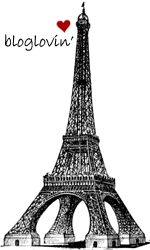There is a saying; you are only as strong as your weakest part. This is true in almost every phase of life and same is when it comes to 3D Visualisation. It seems completely obscure for me to create stunning geometry only to apply sub-par texture maps. It’s like ultimately being capable of buying the house of your dreams and then decorating it with second hand wallpaper!
Below are some common mistakes, when it comes to 3D Visualisation texture mapping:
Using Low Resolution Textures
Obviously, this point is determined by your final output render size, but as a general thumb rule applies the highest resolution textures you can also apply. Final thing you want to see in your last render is pixels ruining all those hours of modeling. Use high resolution texture maps to create crisp and clean 3D Visualisation renders.
Obviously, this point is determined by your final output render size, but as a general thumb rule applies the highest resolution textures you can also apply. Final thing you want to see in your last render is pixels ruining all those hours of modeling. Use high resolution texture maps to create crisp and clean 3D Visualisation renders.
Tiling Relic
If you are making a seamless texture yourself, either by manipulating a stock material or creating one from scratch using photography or from graphics program of your choice; analyze it carefully for any features that may noticeably repeat. When applied over larger areas this repeating generates extremely impractical results.
Using photographs with strong light sources
Few things are unambiguous and they surely ruin a 3D Visualisation textures with different light sources and shadows. Any Photoshop wizardry in the world won’t help if the light is coming from the opposite direction. If you are using photography to create texture maps, Try to use images with little contrast and lit directly straight on with minimal shadows; and if you are taking them by your own, it’s best to try and shoot your photographs on an overcast day.
Wrong world scale
It’s shocking that this ever gets unseen, but it does. If you are creating an architectural piece, be it a residential or commercial 3D visualisation make sure your textures have a realistic world scale. A common redbrick shouldn’t look like it’s a foot in length, or wooden floor panel’s measure 10mm wide. If you are creating the texture maps on your own, set up a real world scale guide to help out.
It’s shocking that this ever gets unseen, but it does. If you are creating an architectural piece, be it a residential or commercial 3D visualisation make sure your textures have a realistic world scale. A common redbrick shouldn’t look like it’s a foot in length, or wooden floor panel’s measure 10mm wide. If you are creating the texture maps on your own, set up a real world scale guide to help out.
Unnoticeable Details Effect Realism
Mostly, 3D Visualisation in Brisbane relies on realism. It is vital that texture maps are approached in the same way. Treat every surface and texture map as a character; it has a history and a past. Over the time, every surface will have varying amounts of wear and tear, be it from human interaction to environmental corrosion. Examine real world surfaces carefully and feel about the history of the subject you are modeling. These small and seemingly unnoticeable details will make a huge difference to the realism in any 3D Visualisation. +C2creativeAu















